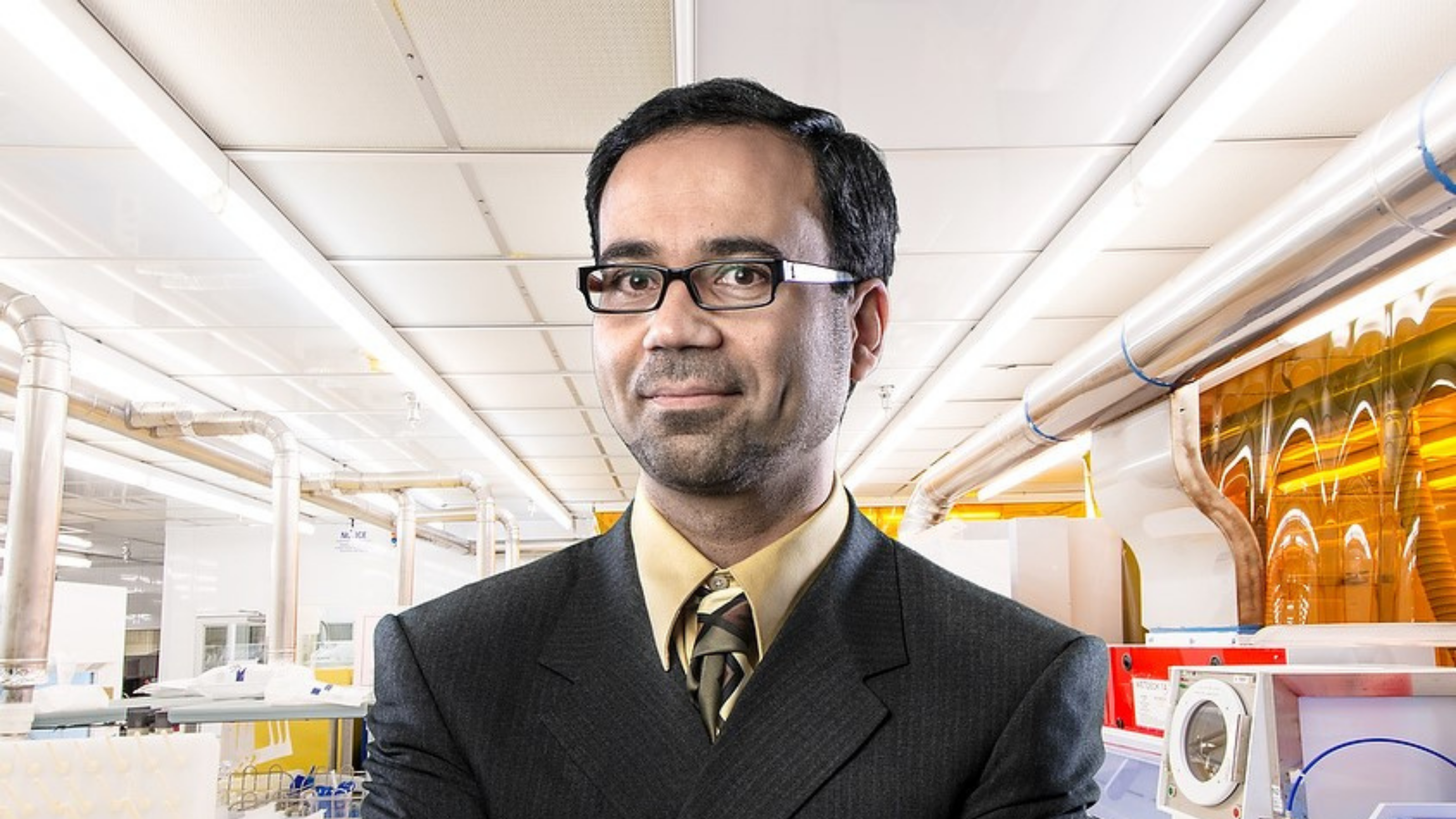Long wait times to access health services aren’t anything new, especially for those living outside of urban centres — and the COVID-19 pandemic hasn’t made it any better.
Mahdi Tavakoli, an electrical and computer engineering professor and director of the Telerobotic and Biorobotic Systems Group, is designing solutions to make remote medicine a thing of the near future.
Mahdi’s research group was one of 23 U of A projects to recently benefit from a $4.8 million grant from the Canada Foundation for Innovation. The funds will support his group’s research into technologies that allow clinicians to offer care from a distance, including performing sonography while complying with physical distancing requirements.
In this week’s Innovator Spotlight, Mahdi shares his other projects on the horizon and the pleasures of working near Edmonton’s river valley.
How do you describe your work to people who don’t work in your field?
I am researching new modalities of healthcare service delivery for use during and after the COVID-19 pandemic.
The burden on our healthcare system during this pandemic has been at an all-time high. To maintain emergency room and ICU bed capacity, outpatient care, chronic illness care and procedures have been delayed — potentially to the detriment of patients and individuals in need of care.
We need to improve access to healthcare. In the specific COVID-19 context, this means redesigning modes of access to the healthcare system’s services and increasing the distance between patients and workers to prevent the transmission of the virus. In the longer term, this means developing robust and resilient technology-based frameworks for Albertan and Canadian healthcare, especially to provide care for underserved, Indigenous and rural populations.
What’s one big problem you want to solve through your work?
My research lab has devoted significant time and resources since the beginning of this pandemic to investigate ways to significantly reduce the risk of infectious disease transmission to frontline healthcare workers by making it possible to triage, evaluate, monitor and treat patients from a safe distance. One example, shown in this video, is a remote service delivery platform that allows clinicians to complete various tasks, such as sonography, at a safe distance from patients. Such technology minimizes the duration and frequency of close clinician-to-patient contacts to reduce the risk of spreading the disease in the clinic.
The recent Canada Foundation for Innovation award allows us to push this research further. Specifically, it will allow us to develop robot-assisted supports for mobility assistance of the elderly in home and long-term care environments, and means for evaluation and physical rehabilitation of injured workers, echocardiography and other ultrasound imaging, monitoring and disinfection of ICU and hospital facilities and blood component manufacturing at Canadian Blood Services.
What does the word “innovation” mean to you?
To me, innovation means collaboration with bright scientists to solve real-world problems. Innovating in the field of biomedical engineering requires a very diverse ecosystem of research labs because of how highly interdisciplinary this area is. My lab acts as a piece of the puzzle and offers expertise in developing robots and robotic systems for various biomedical applications including surgery, therapy, rehabilitation, telehealth and telemedicine. The long-term goal of my research is to demonstrate the practical benefits of robotics technologies and prove robotics assistance to be a practical long-term solution to enhancing both the capacity and the resilience of the Canadian healthcare system.
What’s been your biggest a-ha moment — in life or work — so far?
It was realizing that technological innovations are not necessarily the job-killers that they are typically portrayed as. They can be life-savers as we saw during this pandemic. My favourite example is how Amazon's previous investment in robotic automation within its fulfillment centers proved worthwhile especially at the beginning of the pandemic when it allowed robust shipment of crucial medical supplies to hospitals and household staples to homes of people strictly ordered to stay indoors.
If anything, the COVID-19 pandemic showed us how critical it is to have a resilient healthcare system that can function robustly in the face of wide-spread infectious diseases. Such resilience can be achieved by incorporating various forms of technology into the healthcare service delivery ecosystem.
How do you or your team come up with your best ideas?
Typically, interdisciplinary dialogue is what leads to idea generation. For instance, a clinician poses a challenge they are facing on a daily basis in the clinic and asks for a practical and ethical solution to effectively tackle it. Often, as we are working on a possible solution, other uses for it in the clinic come up. This is an iterative process and involves constantly talking with people.
What’s your favourite thing about working at the U of A?
U of A has really good researchers in the area of biomedical engineering who have generated and continue to generate a flurry of research activity. I feel lucky to be working with them. I also love being close to nature and that is satisfied when you live in Edmonton and work near the North Saskatchewan River!
This conversation has been edited for brevity and clarity.
Innovator Spotlight is a weekly feature that introduces you to a faculty or staff member whose big ideas are making a big difference.
Do you know someone who’s breaking boundaries at the U of A? (Maybe it’s you!) We’re interested in hearing from people who are creating new solutions to make our world better. We want to feature people working across all disciplines, whether they’re championing bold ways of thinking, driving discovery or translating insights from the lab into the market.
Get in touch at blog@ualberta.ca.
